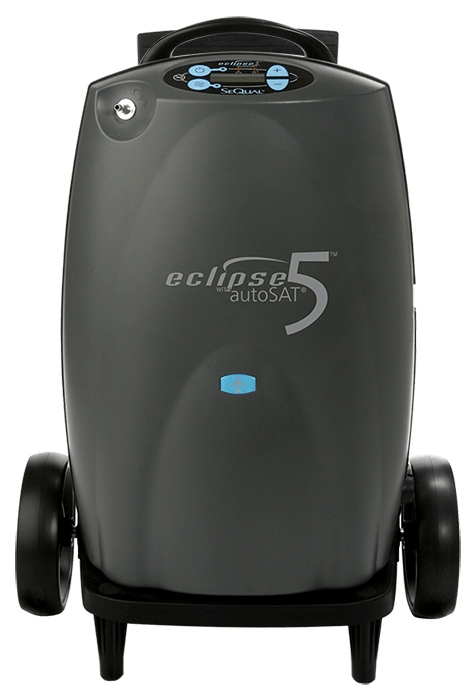
Assisted living gives seniors the care they need while supporting their independence, but this supportive care comes at a cost: The monthly median cost of assisted living in the United States is over $5,000. There are options to help cover the cost of senior care, including long-term care insurance (LTCi). Older adult LTCi policyholders considering moving to senior living might wonder if long-term care insurance covers assisted living. Depending on the terms and features of the policy and the policyholder’s care needs, long-term care insurance may cover at least some assisted living costs.
The type of insurance policy you have, its terms and conditions, your health status, and the care services you need all play a role in determining whether an LTCi policy will cover assisted living costs. Here, we explain the terms and features of these policies that determine whether, how much, and for how long they cover assisted living. We’ll also go over the care needs that trigger LTCi coverage and how the policies work.
What is long-term care insurance?
Long-term care insurance is a type of insurance coverage people can purchase to help pay for long-term care costs. Using LTCi benefits, policyholders can protect their assets and income because they may not have to pay out of pocket for all their long-term care needs.
LTCi policies are helpful because they can help pay for services many seniors need that aren’t covered by health insurance. Medicare, for instance, doesn’t pay for assisted living. If a resident has an LTCi policy and meets the criteria to file a claim, their policy can help cover some assisted living costs. These policies come in handy when monthly assisted living costs reach thousands of dollars by lessening the resident’s financial responsibility.
How does long-term care insurance work?
People purchase long-term care insurance policies similarly to how they would buy other types of insurance products. The individual works with a reputable insurance carrier to learn the type of policy that best meets their needs. They may need to complete a health questionnaire to determine if they qualify for coverage. Once they purchase a policy, they pay monthly premiums. When the policyholder experiences a triggering event (such as needing help with at least two activities of daily living, like bathing and dressing), they may be able to file a claim and begin to use the policy to cover costs for services.
Typically, the LTCi policy reimburses the policyholder for the costs of services rendered. The policyholder then refiles the claim, and they can continue to receive benefits for the duration the policy allows, which can be limited to a few years or extend to the length of time the policyholder needs long-term care services.
How do I know if my policy covers my assisted living costs?
One way to determine if a long-term care insurance policy will pay for assisted living is to review the policy’s terms and conditions in the outline of coverage. This outline provides details on services that are and are not covered. These policies have complex terms and conditions and may be tricky to understand. Policyholders can connect with their insurance provider to get clarity on their policy. Some third-party companies will review the policy for the individual and even assist the policyholder with filing the claim, which will need to be done on a regular basis for as long as the policyholder receives benefits.
Several factors affect whether and how much a long-term care insurance policy pays for services in an assisted living facility. These factors typically include:
- Terms of the policy.
- Maximum daily benefit amount.
- Inflation protection.
- Elimination period.
- Length of coverage.
- Whether the policyholder meets the policy’s benefit triggers.
Let’s go over some of these factors next.
Policy features that impact assisted living coverage
Long-term care insurance policies contain several key features that impact whether they cover assisted living costs and how much coverage the policyholder will receive. Typically, the insured can choose from various options when applying for coverage, and these features play their roles in whether the policy will cover assisted living and how much coverage the policy provides.
Daily benefit amount
Many long-term care insurance policies detail the amount of money the policyholder is reimbursed daily, called the daily benefit amount. For instance, you may be able to choose anywhere from $100 per day up to $500 per day or more. You’ll need to compare the policy’s daily benefit amount to the daily cost of assisted living. The daily benefit amount may or may not cover the full amount, so while the LTCi helps, it may not cover the entire daily cost.
Benefit cap
In addition, long-term care insurance policies will typically “cap” the benefits at a maximum amount for the entire policy. For example, a policy with a $200 daily benefit amount may have a total maximum limit of $219,000. That amount could essentially pay for three years of care ($200 per day X 365 days X 3 years = $219,000).
Following this logic, if care costs less than $200 per day, the maximum benefit of $219,000 could last longer than three years.
Inflation protection
Many long-term care insurance policies offer inflation protection to help keep up with the rising cost of care. With this option, the daily benefit amount increases regularly.
Elimination period
Before any benefits are paid from a long-term care insurance policy for assisted living or any other service, the insured must satisfy an elimination period. Depending on the policy, these waiting periods generally last 30, 60, or 90 days.
Therefore, once the benefits are triggered, the insured will still have out-of-pocket charges until the elimination period has elapsed. Longer elimination periods will usually result in a lower premium amount.
Length of coverage
Most long-term care insurance policies have a maximum duration for which they will provide benefits. Common durations are two to five years. Some policies don’t have limits and will cover the insured for as long as they need the benefits, but these policies are less common.
This is an important factor in determining how much the policy will cover. Let’s say a person’s policy has a $500 maximum daily benefit but has a two-year maximum length of coverage. The policyholder’s assisted living costs may be completely covered for those two years, but if they continue to live at assisted living beyond that time, they’ll need to find alternative payment methods after the two years pass.
Long-term care insurance benefit triggers
As with other types of insurance, the insured must meet certain criteria known as benefit triggers before a long-term care insurance policy will pay out for assisted living.
Typically, there are two ways to trigger the benefits of a long-term care insurance policy. These include:
- The inability to perform two out of the six activities of daily living (ADLs) without assistance or supervision.
- Cognitive impairment, such as Alzheimer’s disease or other forms of dementia, that makes it impossible for the insured to live independently.
The activities of daily living are used to measure one’s physical abilities. Activities of daily living (ADLs) include:
- Bathing.
- Dressing.
- Eating.
- Toileting.
- Caring for incontinence.
- Transferring (such as into and out of bed).
A doctor must diagnose the insured’s cognitive impairment or certify that assistance with at least two ADLs is necessary for at least 90 days.
Does your long-term care insurance cover assisted living?
If you already own a long-term care insurance policy or are considering purchasing one, it is important to know whether it will cover assisted living, especially because assisted living is generally not covered by Medicare or private health insurance. With the right policy, you can have peace of mind that you will receive coverage for the care you may need as you age.








